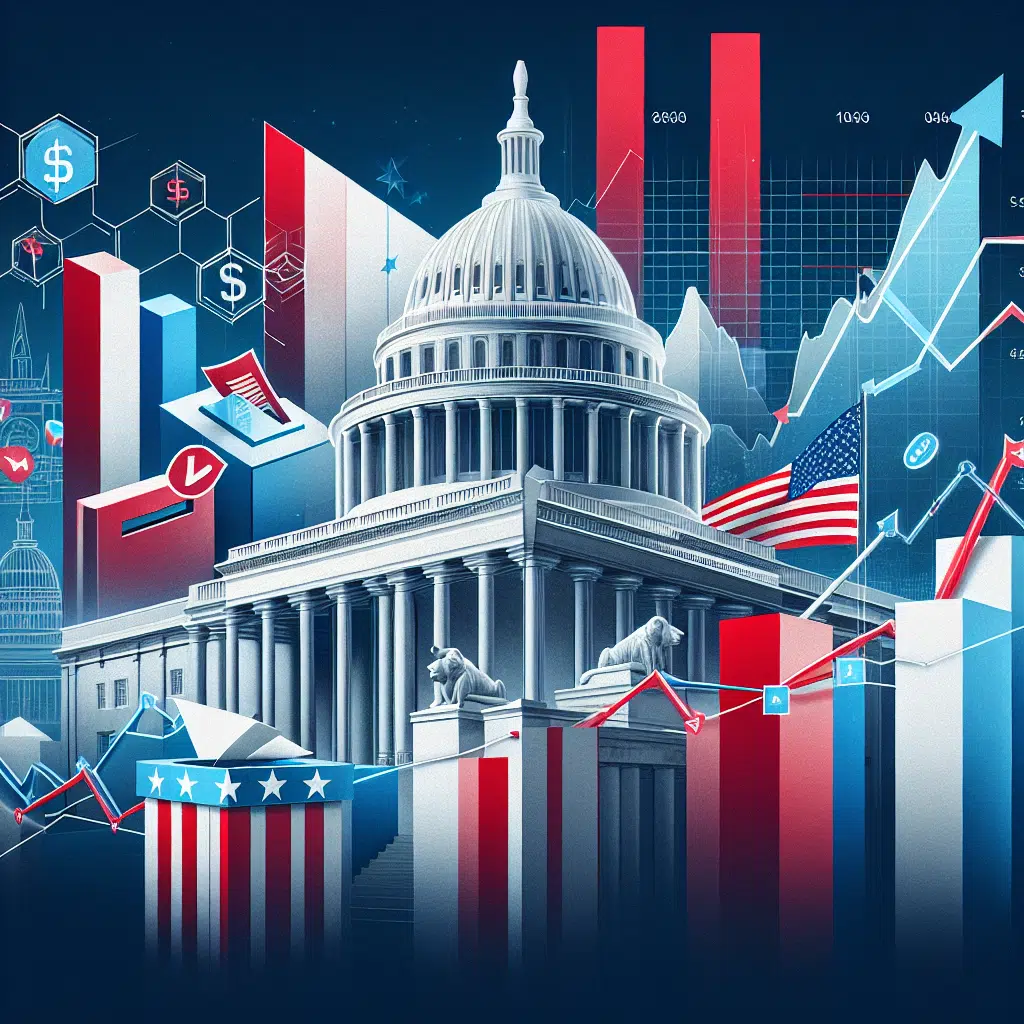In a climate of heightened anticipation and caution, global financial markets are navigating choppy waters, influenced by looming U.S. election risks and fluctuating interest rates. As investors grapple with these uncertainties, stock performance remains mixed, with the U.S. dollar and oil prices adding complexity to the economic landscape. This article explores the multifaceted factors shaping the current market dynamics and what they might mean for the future.
U.S. Election Looms Large Over Markets
As the U.S. election approaches, anxiety among investors is palpable. The tight race between Republican former President Donald Trump and Democratic Vice President Kamala Harris, especially in crucial swing states, has introduced a layer of unpredictability. Markets fear a contested result that could unsettle global financial stability and ignite geopolitical tensions.
This uncertainty has already manifested in stock markets, with the S&P 500 closing the week nearly 1% lower. Utilities and financial stocks led the decline, although gains in technology and communication services provided some balance, allowing the Nasdaq to close slightly higher. The Dow Jones Industrial Average also saw a dip, falling by 0.61% to 42,114.40.
Interest Rates and Economic Indicators
Interest rates remain a critical element in the market’s current state. U.S. Treasury yields inched higher as investors await key employment data to gauge the Federal Reserve’s next move on interest rate cuts. The benchmark 10-year note yield rose by 3.8 basis points to 4.24%, reflecting market anticipation of the Fed’s decisions.
Traders are placing heavy bets on a 25-basis-point cut at the Fed’s November meeting, with nearly 95% odds according to the CME Group’s FedWatch Tool. These expectations underscore the influence of economic indicators on investor sentiment, as the Fed’s actions are closely tied to employment and inflation data.
Oil Prices and Geopolitical Tensions
Amidst these economic concerns, oil prices have seen a notable rise, buoyed by escalating tensions in the Middle East. Brent crude futures increased by 2.25% to $76.05 a barrel, while U.S. West Texas Intermediate crude climbed 2.27% to $71.78. Both benchmarks ended the week with approximately 4% gains.
These fluctuations in price are being driven by concerns regarding supply disruptions that may occur as a result of ongoing conflicts in the region. Oil markets are subject to an increased risk premium as a result of the possibility of further geopolitical strife, which may continue to exist if tensions do not decrease.
Currency Markets React to Dollar Strength
The currency markets are also feeling the ripple effects of the current economic and political environment. The U.S. dollar strengthened, marking its fourth consecutive weekly gain against the Japanese yen, which fell to near three-month lows. The dollar index, which measures the greenback against a basket of other currencies, rose by 0.24% to 104.30.
This upward trajectory reflects the dollar’s appeal in uncertain times, as investors seek safe-haven assets. Conversely, the euro and British pound weakened, with the euro down 0.29% to $1.0796 and sterling slipping 0.08% to $1.2961.
With the U.S. election just around the corner, market participants must remain vigilant. Political developments are likely to drive market volatility, with potential implications for interest rates, trade policies, and overall economic stability. The interplay between these factors will be crucial in determining market direction in the near term.
Investors should keep a close watch on upcoming economic data releases, such as the U.S. employment figures and Fed announcements, to better understand the trajectory of interest rates and their impact on various asset classes. Additionally, geopolitical developments, particularly in oil-producing regions, could continue to influence market sentiment.
Conclusion
The current market environment is characterized by a confluence of political and economic forces, each contributing to a complex and ever-evolving landscape. As the U.S. election and interest rate decisions loom large, investors face the challenge of navigating these uncertainties while seeking opportunities for growth and stability. By staying informed and adaptable, market participants can better position themselves to manage risks and capitalize on potential gains in this dynamic financial setting.


